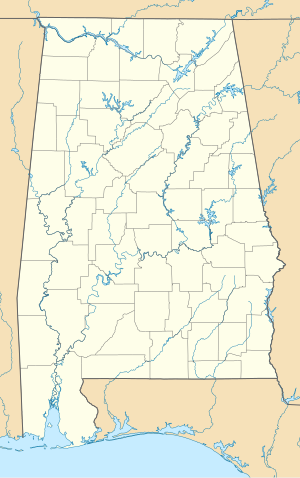
W. T. Preston is a specialized sternwheeler that operated as a snagboat, removing log jams and natural debris that prevented river navigation on several Puget Sound-area rivers. She is now the centerpiece of the Snagboat Heritage Center in Anacortes, Washington. She was designated a National Historic Landmark in 1989. Built in 1929, she is one of two surviving snagboats built and operated by the United States Army Corps of Engineers, and the only one on the American west coast.

CSS Muscogee was an casemate ironclad built in Columbus, Georgia for the Confederate States Navy during the American Civil War. Her original paddle configuration was judged a failure when she could not be launched on the first attempt in 1864. She had to be rebuilt to use dual propeller propulsion. Later renamed CSS Jackson and armed with four 7-inch (178 mm) and two 6.4-inch (163 mm) cannons. She was captured while still fitting out and was set ablaze by Union troops in April 1865. Her wreck was salvaged in 1962–1963 and turned over to the National Civil War Naval Museum in Columbus for display. The ironclad's remains were listed on the National Register of Historic Places in 1970.

Delta King is a 285-foot-long sternwheel steamboat (87 m) and the sister ship of Delta Queen, built in Scotland and California for the California Transportation Company's service between Sacramento and San Francisco, California. She entered service in 1927 and continued until 1940. After wartime service with the United States Navy, Delta King served as an accommodation ship at Kitimat, British Columbia in the 1950s and then returned to California for static use at Old Sacramento where she remains as a hotel, restaurant and venue.

George M. Verity is a historic towboat now displayed as a museum ship in Keokuk, Iowa. Built in 1927 as SS Thorpe, she is nationally significant for being one of only three surviving steam-powered towboats in existence in the United States. She was declared a National Historic Landmark in 1989.
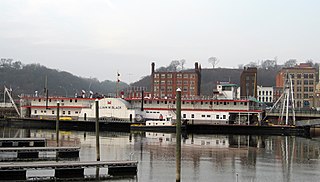
William M. Black is a steam-propelled, sidewheel dustpan dredge, named for William Murray Black, now serving as a museum ship in the harbor of Dubuque, Iowa. Built in 1934, she is one of a small number of surviving steam-powered dredges, and one of four surviving United States Army Corps of Engineers dredges. She was declared a National Historic Landmark in 1992. She is open for tours as part of the National Mississippi River Museum & Aquarium.

Lone Star is a wooden hull, steam-powered stern-wheeled towboat in LeClaire, Iowa, United States. She is dry docked and on display at the Buffalo Bill Museum in LeClaire. Built in 1868, she is the oldest of three surviving steam-powered towboats, and the only one with a wooden hull. She was declared a National Historic Landmark on 20 December 1989.

Sergeant Floyd is a historic museum boat, serving as the Sergeant Floyd River Museum & Welcome Center at 1000 Larsen Park Road in Sioux City, Iowa. Built in 1932 as a utility vehicle and towboat, she is one of a small number of surviving vessels built specifically for the United States Army Corps of Engineers in its management of the nation's inland waterways. The boat has been restored and drydocked, and now houses exhibits about the Missouri River and local tourism information. The museum is a facility of the Sioux City Public Museum.

The Propulsion and Structural Test Facility, also known as Building 4572 and the Static Test Stand, is a rocket testing facility of the George C. Marshall Space Flight Center in Huntsville, Alabama. Built in 1957, it was the site where the first single-stage rockets with multiple engines were tested. It was declared a National Historic Landmark in 1985 for its role in the development of the United States space program.
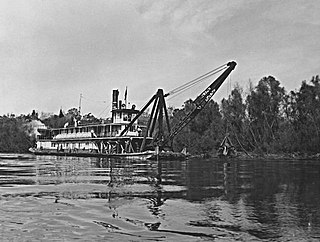
A snagboat is a river boat, resembling a barge with superstructure for crew accommodations, and deck-mounted cranes and hoists for removing snags and other obstructions from rivers and other shallow waterways.
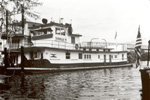
Standard, also known historically as Donald B and Barbara H, is a paddlewheel towboat that has been named a US National Historic Landmark and is now based at Bellaire in eastern Ohio. Built in 1923, she is the oldest surviving unaltered rear-wheel towboat afloat. The boat was declared a National Historic Landmark in 1989.

SS Ste. Claire is a steamer located in Detroit, Michigan. Built in 1910, she was one of the last propeller-driven excursion steamers to be operated on the Great Lakes. She was declared a US National Historic Landmark in 1992. In 2018, a devastating fire destroyed the upper decks, leaving only the steel structure. The ship was delisted as a National Historic Landmark and from the National Register of Historic Places in 2023.
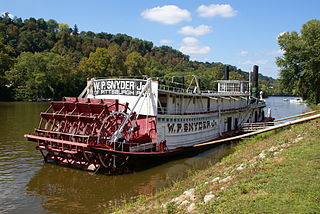
W. P. Snyder Jr., also known as W. H. Clingerman, W. P. Snyder Jr. State Memorial, or J. L. Perry, is a historic towboat moored on the Muskingum River in Marietta, Ohio, at the Ohio River Museum. A National Historic Landmark, she is the only intact, steam-driven sternwheel towboat still on the nation's river system.

Baltimore is a preserved steam-powered tugboat, built in 1906 by the Skinner Shipbuilding Company of Baltimore, Maryland. She is formerly the oldest operating steam tugboat in the United States, but at present does not hold an operating license issued by the US Coast Guard, so is unable to leave her dock at the Baltimore Museum of Industry on Key Highway, Baltimore. Her hull is not capable of operating on open water. Baltimore was built and operated as a harbor inspection tug, capable of acting as a municipal tugboat for city barges, as well as an official welcoming vessel and VIP launch, an auxiliary fireboat, and as a light icebreaker.

M/V Mississippi is a United States Army Corps of Engineers (USACE) towboat operating on the Mississippi River. It is the largest diesel towboat on the river.

Sainte Genevieve, also known as The Genny, was a steam-powered Cutterhead dredge. At the time she was listed on the National Register of Historic Places in 1986, she was located on the Mississippi River along the levee near downtown Davenport, Iowa, United States.
The Arkansas II is a historic snagboat, berthed on the Arkansas River in North Little Rock, Arkansas. She is a steel-hulled sternwheeler, with two decks. The lower deck has a steel-frame cabin, while that on the second deck is wood-frame. A wood-frame pilot house rises above the second deck. The paddlewheel has a steel frame and wooden buckets. The vehicle is utilitarian in appearance, lacking significant decoration. The hull was built in 1939-40 by the Bethlehem Steel Corporation, and it was outfitted at the Ensley Bottoms shipyard of the United States Army Corps of Engineers (USACE) at Memphis, Tennessee. It is believed to be the last steam-powered paddle-wheeler built by the USACE.
The Phoenix was a sidewheel paddle steamer operating on Lake Champlain between the United States states of New York and Vermont, and the British province of Lower Canada. Built in 1815, she grounded, burned and sank in 1819 off the shore of Colchester, Vermont. Her surviving wreckage is the oldest known example of a sidewheel steamer anywhere in the world. The wreck site is a Vermont State Historic Site, which may be visited by registered and qualified divers. It was listed on the National Register of Historic Places in 1998.

The Mamie S. Barrett, also known as Penniman and Piasa, was a historic towboat which was built in 1921. It was located in Eddy Creek Marina, in Eddyville, Kentucky at the time of its listing on the National Register of Historic Places in April 1983.

Bear was a wooden-hulled, stern-wheel steamship that served as a snagboat for the United States Army Corps of Engineers.


